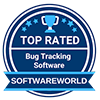From Chaos to Clarity: A Strategic Framework for R&D Project Resource Allocation
Original
-
 ZenTao Content
ZenTao Content -
 2025-10-14 17:00:00
2025-10-14 17:00:00 -
 166
166
In today's competitive landscape, improper resource allocation has become a critical bottleneck constraining R&D project success and team efficiency. Many organizations struggle with common symptoms of this problem: shifting requirements, chaotic project prioritization, mismatched personnel skills, and uncontrolled scope creep. At its core, this challenge stems from the lack of a scientific framework for managing an R&D organization's most valuable asset: its people.
Effectively matching limited, high-skilled resources with strategic projects is paramount. To achieve this, organizations must move beyond reactive problem-solving and implement a systematic, end-to-end management mechanism. This article outlines a robust, four-step framework to build that system, from foundational capability planning to dynamic conflict resolution.
Step 1: Build a Competency Model as Your Foundation
The true capacity of an R&D department is not measured by headcount, but by the alignment between team members' capabilities and project requirements. Different R&D initiatives demand vastly different skill sets.
- New Technology Development: Requires individuals with cutting-edge knowledge and strong exploratory skills.
- Solution-Oriented Products: Needs talent deeply familiar with specific industry scenarios and customer needs.
- Platform Development: Demands personnel with expertise in architectural design, scalability, and system compatibility.
To move from "random dispatch" to precise allocation, Human Resources and R&D leaders must collaborate to build a Competency Model. This involves defining the core skills, experience levels, and knowledge domains for each role. This model becomes the foundation for a standardized assessment system, ensuring that every project is staffed with a team possessing the necessary core capabilities from day one.
Step 2: Implement a Centralized Prioritization Board
Many enterprises, driven by short-term goals, accept projects until team resource saturation reaches unsustainable levels—sometimes as high as 150% to 200%. This leads to employee burnout, reduced efficiency, and a sharp decline in project quality.
The solution is to establish a cross-functional Assignment Handling Board (AHB). This committee brings together leaders from product, business units, R&D, and project management to take collective ownership of prioritization and resource coordination.
The AHB's core responsibilities include:
- Monthly Resource Review: Assessing the current resource load and availability for each product line.
- Holistic Project Prioritization: Ranking all initiatives (new development, maintenance, research, etc.) against strategic goals.
- Resource Matching Analysis: Identifying and quantifying gaps between project demands and available competencies.
- Gap Resolution: Proactively addressing resource shortfalls through strategic hiring, outsourcing, or third-party partnerships.
By using the business roadmap as a primary input, the AHB creates a realistic task roadmap based on actual capacity, ensuring a dynamic and sustainable balance between supply and demand.
Step 3: Adopt a Data-Driven Approach to Requirement Prioritization
Within a single project, a flood of requirements can pull development teams in multiple directions, leading to unfocused investment and wasted effort. To prevent this, a standardized and data-driven process for requirement prioritization is essential.
While a Requirement Management Team (RMT) should facilitate the process, decisions should be based on objective criteria. A best-practice approach involves scoring each requirement across five key dimensions:
- Customer Importance: How critical is this for key customers?
- Sales Project Scale: What is the revenue or strategic value of the associated business opportunity?
- Market & Competitive Impact: Will this feature create a competitive advantage or defend market position?
- General Applicability: Can this requirement be leveraged across multiple products or customer segments?
- Development Effort: What is the estimated cost and complexity to implement?
By scoring and ranking requirements based on these dimensions, teams can ensure their efforts are consistently focused on delivering the highest possible value. Critically, these scoring rules should be customized to align with the company's unique market position and strategic objectives.
Step 4: Establish a Dynamic Conflict Resolution Strategy
Even with perfect planning, resource conflicts are inevitable. Responding by arbitrarily delaying schedules or compromising quality will erode project value. A more effective approach is a two-pronged strategy that addresses both demand and supply.
1. Optimize Resource Demand (Input Side):
- Reduce the project portfolio by placing non-critical projects on hold.
- Modify project scope to focus on the highest-value deliverables.
- Adjust schedules and quality requirements to align with current capacity.
- Cancel low-impact projects to free up resources immediately.
2. Optimize Resource Supply (Output Side):
- Utilize strategic overtime for short-term, critical needs.
- Engage contract workers or suppliers to augment specific skill sets.
- Facilitate cross-departmental resource sharing to balance workloads.
- Adjust the ratio of permanent to temporary staff to match fluctuating demand.
This flexible, dual-pronged approach ensures that projects can continue to advance efficiently, even when faced with unexpected resource constraints.
Conclusion: Building a Resilient R&D Ecosystem
Allocating R&D resources effectively is not a one-time task but a continuous, systematic discipline. By building a framework on four key pillars—competency modeling, centralized project prioritization, data-driven requirement management, and dynamic conflict resolution—organizations can achieve precise alignment between their limited resources and strategic demands. This holistic approach not only enhances project success rates but also boosts team motivation, creating a resilient R&D engine that provides robust support for achieving long-term corporate objectives.
Support
- Book a Demo
- Tech Forum
- GitHub
- SourceForge
About Us
- Company
- Privacy Policy
- Term of Use
- Blogs
- Partners
Contact Us
- Leave a Message
- Email Us: [email protected]








